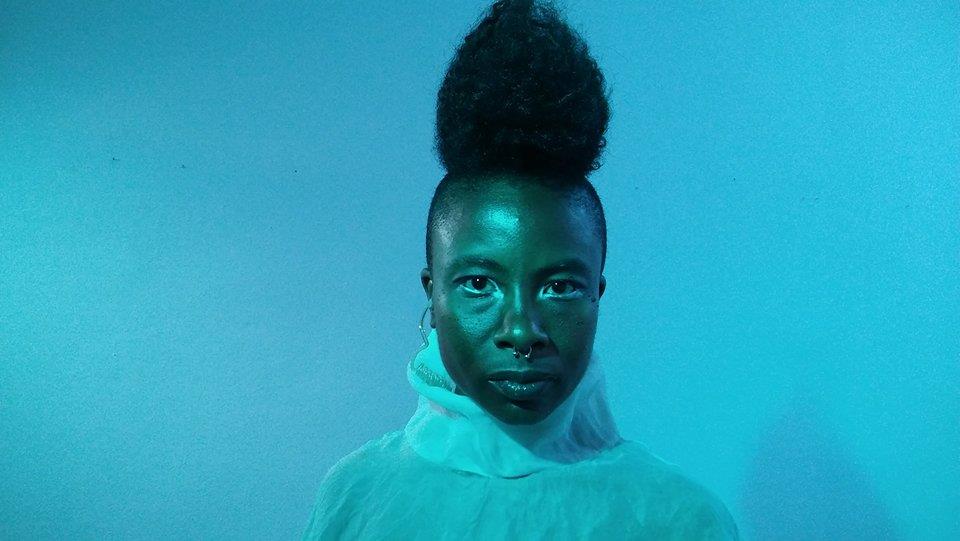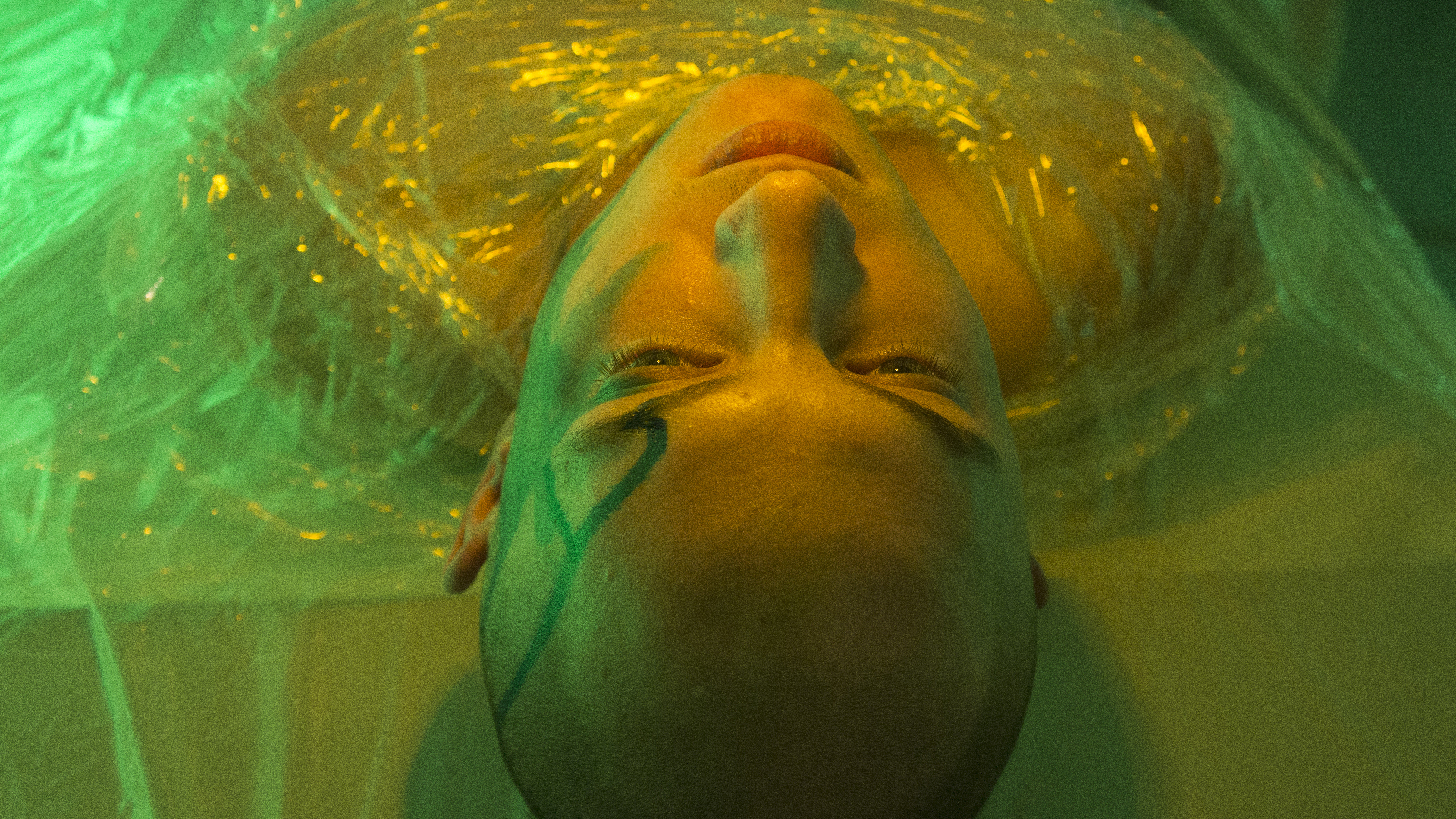
In the lead up to the launch of Dream Babes, a new text by artist and filmmaker Eric Pussyboy discusses his relationship to historical narratives around trans bodies in biology and biotechnology, 20th century scientific practice and contemporary pornography. The text follows Eric’s talk and conversation with Victoria Sin as part of ‘Speculative Sex: I.K.U. and Neurosex Pornoia’, tracing the development of his queer porn series Neurosex Paranoia.
In 2013, Abigail Gnash and I started a queer sci-fi postporn project after watching ‘I.K.U.’ by Shu Lea Cheang. Here I am sharing some of the encounters and experiences that became the process of creating the fiction of ‘Neurosex Pornoia’.
Biology as a space for queer fictions
The way I approached science-fiction is much more rooted in feminist perspectives on science than in science-fiction as a literary or cinematic genre. I was trying to make sense my own experience of taking hormones. Feminist critical writing around me dealt with discourse, performativity, socialization, etc. but it either ignored or dismissed biology. Some years ago I had devoured this kind of argumentation because it legitimized my “inappropriate” gender expression. But now, I wanted to know why I was feeling better as my body changed or why the liquid being injected in my body made my voice change, for example. It was like looking down and finding a body for the first time and wondering about it and its functioning. Seeing for the first time glands, organs, tissues, molecules, cells, etc.
A first turning point was reading the autobiographical book ‘Whipping Girl. A Transsexual Woman on Sexism and the Scapegoating of Femininity’, by Julia Serano, a queer transwoman, who has worked as researcher in the fields of genetics, evolution and developmental biology. In trying to make sense of her own experience, she was rejecting both a biological determinism and extreme social constructivism. Later on, I started looking at feminist biologists like Ruth Bleier, Anne Fausto-Sterling, Donna Haraway or Lynda Birke. They, joined by historians and sociologists of science, have been working towards developing a notion of Biology that is aware of its social and political constitution but it is not reduced to this. In this understanding, biological entities and facts never stand by themselves, they are named and defined against other entities and facts, framed in theories and narratives.

I have been looking into Neuroscience, especially focusing on current research on trans people’s brains in the context of general theories of sex and gender. Essentializing ideas of “male” and “female” brains are very much present here, but they are being contested from feminist neuroscientist, who, based on the same evidence, claim that the variation in brains is so large that it makes no sense to look at them from this sex binary perspective. They use the construct sex/gender for example, to indicate that it is impossible, when looking at the brain, to separate what is biological matter from what is product of social experiences. So, based on the same “facts”, very different scientific models can be crafted. Feminist biologists are much more attentive at the workings of scientific authority as well. On what base do we believe an information to be true? How are scientific findings or theories presented to the wider public? In this sense, “knowing” is much more a management of ignorance and an exercise of trust or mistrust. One of the things I most enjoy working in Neurosex is creating a fantasy about some biotechnology and making it sound and appear credible and coherent.
Biology started shifting for me from a place of oppression and exclusion to a space of agency, possibility and disruption. The starting point for the idea of the neurocodes and the brain implants of the ‘Neurosex Pornoia’ story was a very simple question related to my experience of being trans: “what if I could experience how it feels to inhabit other bodies, other morphologies and physiologies? What if I could experience sex as it is experienced by other bodies?”
I want to note that this vision is not meant in a literal sense of “being someone else”, also not in the neurosex world. As long as I am experiencing through my body, I can never occupy the position of another body, it will always still be based on my experience. For example in the neurosex world I could experience what it feels to be cismale or cisfemale, but it would still be my experience of a cismale or cisfemale body. The fantasy is not about occupying other positionalities or colonizing other experiences.

I was interested in the disruptive political potential of asking the question. I think that the question, once it is on the table, already makes us change the perception of our bodies and the way we often think about sex. It makes a normalized inhabiting of bodies as binary, as gendered and sexed, male or female, extrange. It is about expanding the possibilities. To me, the idea contains the possibility of queerness in a biological sense and it focuses on the queerness of desire and fantasy.
Representations of Power and Resistance
The starting question “what if I could experience how it feels to inhabit other bodies?” multiplied into many other questions: why kind of biotechnology would enable this? How could it work? Why would it had been developed? How would it be related to systems of power? I had already started reading about brain implants and fantasizing about neurosexcodes. But it was necessary to situate that in a political framing, because to me, queerness is not an inherent property of bodies, but it is dependent on systems of power and oppression.
Apart from looking into Biology, I was also looking at the history of medicine to figure out where the idea of transgender and transexuality in the medical institutions came from. As a medical category that can be related to the present one, it was first coined by Magnus Hirschfeld as a variation from the category of the transvestite. In Magnus Hirschfeld’s Institute for Sexology, later burnt down by the Nazis, trans people first got permits to be allowed to live according to their self-defined gender. Hirschfeld fought for the decriminalization of male homosexuality in Germany. It was a time where trans people experimented with hormones and surgeries, both with doctors and by themselves. This way of self-experimentation is something that I wanted to introduce more openly in the third episode but is already present in the the first and second.
When I was reading about this it was quite conflicting because on the one side there was all this disruption against the established sexual morality, heterosexuality and gendered roles coming from science, but on the other side, why all this interest on sexual deviancy?

Sexuality became increasingly relevant at the population level with the establishment of evolution theory and the spread of Eugenics and social-darwinist ideas in Europe and the United States. These ideas are characterized by naturalization and legitimation of a racist and white supremacist worldview in the context of colonialism and imperialism. It was all about improvement of the own population, treating people as biological material and measuring them in terms of the costs to the state and the contribution to economy. Quantified in labour and in offspring. Sexual deviancy in Europe was a potential threat to the good society and thus, to white supremacy. So all of this research from medicine was concerned with the question of determining whether white homosexuals, transvestites etc were dangerous or not to this system and how to deal with them.
When thinking about the question of how and why this biotechnology would have been developed and how it would be used in systems of power, I worked from this genealogy that is still so present. I did not want to create a simplistic scenario reproducing some formula of bad science as the enemy of victimized queers. I wanted to reflect the entanglements, the contradictions. I also wanted to stay away from fantasies of violent endings of oppression in one blow strike because even if that might be entertaining to watch, it is a lazy interpretation of power. I think my emphasis was on the contradictions and ambivalences, while at the same time not denying positionalities, agency and the possibility of resistance. I was not looking to situate the plot at a big structural level of oppression, but close to the conflicts and decisions at the individual level.
I can’t tell how much of this comes across when people see the films. I have heard all kinds of interpretations of it, people who think it is about aliens for example. But that is great. I was dealing with these topics also in an academic context, where everything is supposed to make sense, where you are supposed to be able to explain or understand things in a rational way. The films allowed me to explore these issues far away from this constrains, leaving space for confusion and disorientation.
Queer Sex in the Laboratory
From the beginning we wanted to make queer porn or something queer and explicit. I came across queer porn and feminist porn first on the internet. There was Shine Louise Houston’s ‘Crash Pad Series’ and also Courtney Trouble’s ‘Indie Porn Revolution’, for example. I had never seen anything like that, growing up in a sexually (and otherwise) conservative environment in Valencia. I was quite ashamed of my own sexuality and had very negative feelings towards my body. To me, queer porn was very empowering, it was educating, fun and beautiful.
When I look then at scientific texts trying to name, classify, order, evaluate and judge sexuality and sexual behaviours it feels very ironic. This desire to control sexuality seems to me a lot like any other sexual desire that wants to be satisfied. All the spaces of science are full of sex, hidden as observations, examinations, measurements, tests, theories. Their story is not one of consent and enjoyment, but a story of violation, exploitation and death. They have established themselves historically as epistemic authorities and put themselves in the position to kill and lock away innumerable lives in prisons or psychiatric institutions, to control and decide over bodies. There is something like a symbolic revenge in bringing deviant queer bodies in these spaces, taking over and using it for our own fantasies and pleasures. Here is also the reason why the project is defined as postporn rather than porn. Because we navigate spaces full of trauma. ‘Neurosex Pornoia’ is very sexually explicit, but it does not aim primarily at arousing the audience.
